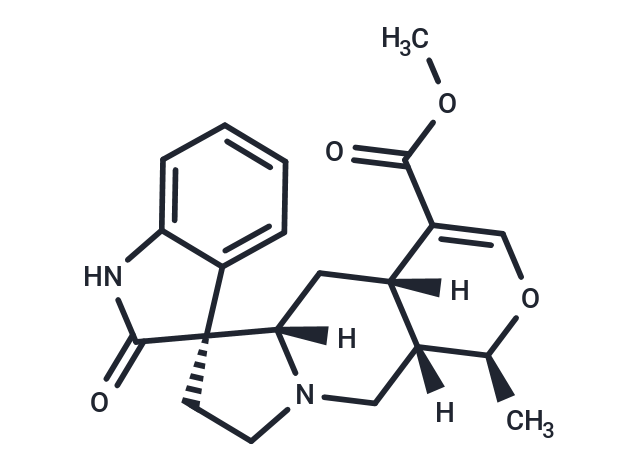Shopping Cart
- Remove All
 Your shopping cart is currently empty
Your shopping cart is currently empty

Isopteropodine (Uncarine E) is an isoyohimbine-type octindole alkaloid isolated from Hamelia patens micropropagated and has antimicrobial activity and stimulates the immune system. Isopteropodine has antimicrobial activity and stimulates the immune system.Isopteropodine is a positive modulator of muscarinic M1 and 5-HT2 receptors and a PXR activator that induces contraction of the rat myometrium.


| Description | Isopteropodine (Uncarine E) is an isoyohimbine-type octindole alkaloid isolated from Hamelia patens micropropagated and has antimicrobial activity and stimulates the immune system. Isopteropodine has antimicrobial activity and stimulates the immune system.Isopteropodine is a positive modulator of muscarinic M1 and 5-HT2 receptors and a PXR activator that induces contraction of the rat myometrium. |
| In vitro | Here, we investigated for the first time the antiproliferative and apoptotic effects of highly purified oxindole alkaloids, namely Isopteropodine (A1), pteropodine (A2), isomitraphylline (A3), uncarine F (A4) and mitraphylline (A5) obtained from Uncaria tomentosa, a South American Rubiaceae, on human lymphoblastic leukaemia T cells (CCRF-CEM-C7H2). Four of the five tested alkaloids inhibited proliferation of acute lymphoblastic leukaemia cells. Furthermore, the antiproliferative effect of the most potent alkaloids pteropodine (A2) and uncarine F (A4) correlated with induction of apoptosis. After 48 h, 100 micromol/l A2 or A4 increased apoptotic cells by 57%. CEM-C7H2 sublines with tetracycline-regulated expression of bcl-2, p16ink4A or constitutively expressing the cowpox virus protein crm-A were used for further studies of the apoptosis-inducing properties of these alkaloids. Neither overexpression of bcl-2 or crm-A nor cell-cycle arrest in G0/G1 phase by tetracycline-regulated expression of p16INK4A could prevent alkaloid-induced apoptosis[1] |
| Alias | Uncarine E |
| Molecular Weight | 368.43 |
| Formula | C21H24N2O4 |
| Cas No. | 5171-37-9 |
| Smiles | [H][C@@]12C[C@]3([H])C(=CO[C@@H](C)[C@]3([H])CN1CC[C@@]21C(=O)Nc2ccccc12)C(=O)OC |
| Relative Density. | 1.33 g/cm3 |
| Storage | store at low temperature,keep away from direct sunlight | Powder: -20°C for 3 years | In solvent: -80°C for 1 year | Shipping with blue ice. | |||||||||||||||||||||||||||||||||||
| Solubility Information | DMSO: 36.84 mg/mL (100 mM), Sonication is recommended. | |||||||||||||||||||||||||||||||||||
Solution Preparation Table | ||||||||||||||||||||||||||||||||||||
DMSO
| ||||||||||||||||||||||||||||||||||||

Copyright © 2015-2025 TargetMol Chemicals Inc. All Rights Reserved.